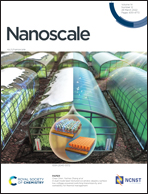Magnetic bio-hybrid micro actuators
Abstract
Over the past two decades, there has been a growing body of work on wireless devices that can operate on the length scales of biological cells and even smaller. A class of these devices receiving increasing attention are referred to as bio-hybrid actuators: tools that integrate biological cells or subcellular parts with synthetic or inorganic components. These devices are commonly controlled through magnetic manipulation as magnetic fields and gradients can be generated with a high level of control. Recent work has demonstrated that magnetic bio-hybrid actuators can address common challenges in small scale fabrication, control, and localization. Additionally, it is becoming apparent that these magnetically driven bio-hybrid devices can display high efficiency and, in many cases, have the potential for self-repair and even self-replication. Combining these properties with magnetically driven forces and torques, which can be transmitted over significant distances, can be highly controlled, and are biologically safe, gives magnetic bio-hybrid actuators significant advantages over other classes of small scale actuators. In this review, we describe the theory and mechanisms required for magnetic actuation, classify bio-hybrid actuators by their diverse organic components, and discuss their current limitations. Insights into the future of coupling cells and cell-derived components with magnetic materials to fabricate multi-functional actuators are also provided.

- This article is part of the themed collection: Recent Review Articles


 Please wait while we load your content...
Please wait while we load your content...